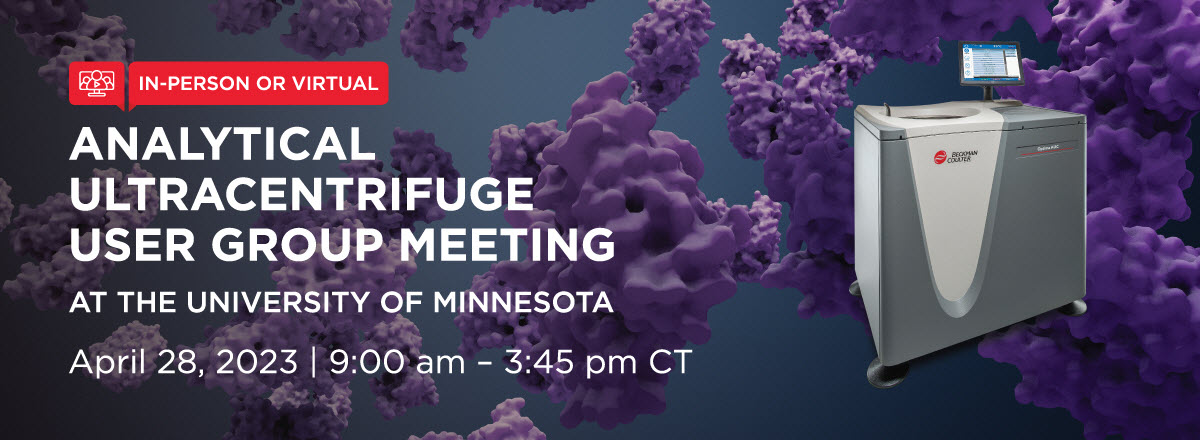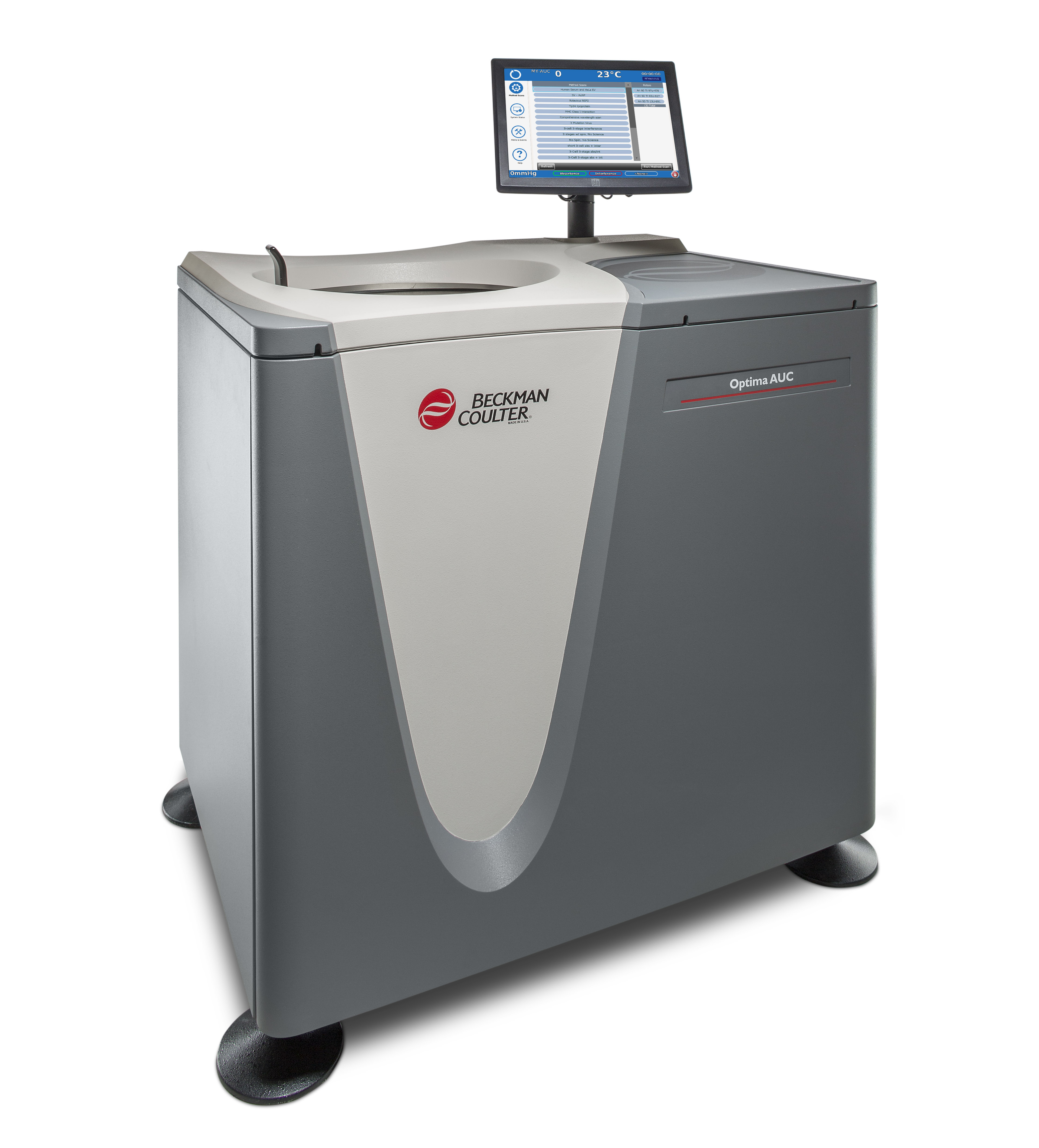
The Optima AUC is a versatile method to characterize the hydrodynamic behaviors of biological (and other samples) in solution. it is based on the principles of sedimentation - the passage down a tube in a centrifugal field. The Optima AUC instrument can detect samples based on UV-vis absorbance as well as refractive index.
Workstation Unique Advantages of AUC Analysis
You only need to select one option. The event is in-person. However, you may choose to register to attend in-person or virtually; but not both. It's important for us to account for the number of participants who will be attending the event in-person to reserve the proper number of seats in the meeting room.
Click the HTML icon in the toolbar above to edit spacer height.
TO EDIT: Change the class="spacer-3" to any number between 0 (none) and 5 (most) to resize a spacer. Ex. class="spacer-5"
Vertical spacers are responsive and 50% smaller on mobile than on tablet+.

| Nanoparticles |
|
|---|---|
| Quantum Dots | |
| RNA Aptamers | |
| Polysaccharides | |
| Viral Vectors for Gene Therapy |
|
| Membrane Protein-Lipid Interactions | |
| Protein-Protein Interactions |
|
| Protein-Nucleic Acid Interactions |
|
| and many more! |
In one experiment, AUC technology can provide more answers to critical questions than any other comparable technique:
Questions to understand the behavior of macromolecules** :

James J. Marti, Ph.D.
James Marti is Senior Scientist and Outreach Coordinator for the Minnesota Nano Center, where he manages two research laboratories focusing on nanomaterials and the biological applications of nanotechnology. Prior to joining the MNC, Dr. Marti conducted research on nanoparticles for academic and government labs, and served as R&D director for several small companies with a nanotechnology product focus. A physicist by training, his primary scientific interest has been the physics and chemistry of micron-and nanometer-scale particles, particle systems, and related materials.

Borries Demeler, Ph.D.
Borries Demeler, Ph.D. is the Canada 150 Research Chair for Biophysics at the University of Lethbridge in Canada, with cross appointments at UT Health in San Antonio and at the University of Montana. Dr. Demeler is well known for his contributions to the field of solution biophysics, in particular for the hydrodynamic modeling of analytical ultracentrifugation experiments. He has published over 190 manuscripts and book chapters. He is the principal author of the open source UltraScan software, and has created a world-wide network of laboratory information management systems (LIMS servers) to support high resolution hydrodynamic modeling with high-performance computing. Together with Prof. Helmut Coelfen in Germany he has pioneered the use of multi-wavelength analytical ultracentrifugation for the study of hetero-interacting systems and measuring binding stoichiometry in the solution state. At the University of Lethbridge he manages the Canadian Center for Hydrodynamics. His NIH-funded research group at the University of Montana develops GMP validation and automation of the analytical ultracentrifugation technique. He is the CEO of AUC Solutions LLC based in Houston Texas, where he provides consulting services to the biopharma industry.

Akash Bhattacharya, Ph.D.
Akash Bhattacharya is a Senior Applications Scientist at Beckman Coulter Life Sciences Colorado. He is a biophysicist by training, with a Ph.D. from the University of Michigan, Ann Arbor where he worked on NMR methods development with Prof. Erik Zuiderweg. He has worked as a postdoctoral scientist at Rutgers and the University of Texas Health focusing on projects related to protein homeostasis, HIV infection and cell-signaling / ion channels. He is an expert in NMR spectroscopy, Analytical Ultracentrifugation (AUC), fluorescence spectroscopy, and other associated biophysical/biochemical tools. He joined Beckman Coulter in 2018 and has worked on AUC methods/applications development. His current research interests include: viral capsids, plasmids and gene therapy vectors, lipid nanoparticles and vesicles. Apart from running the Beckman Coulter Centrifuge Apps research program, Akash has created the Beckman Coulter AUC training curriculum. Akash’s work has been published at various peer-reviewed journals such as PNAS and presented at academic and industry conferences such as the Biophysical Society meeting, Gene Therapy Analytical Development meeting. He also works on building collaborations with academic and industry partners to promote market development for Beckman Coulter Cell Health and Centrifuge products.
References:
**Introduction to Analytical Ultracentrifugation
Author: GREG RALSTON - DEPARTMENT OF CHEMISTRY, THE UNIVERSITY OF SYDNEY AUSTRALIA
Page 1
https://www.beckman.com/gated-media?mediaId={474F39D3-242E-41F9-8BC6-E4BED5DE54E6}
* Product is not verified or validated for use in diagnostic procedures.
© 2023 Beckman Coulter, Inc. All rights reserved. Beckman Coulter, the stylized logo, and the Beckman Coulter product and service marks mentioned herein, including Optima AUC, are trademarks or registered trademarks of Beckman Coulter, Inc. in the United States and other countries. All other trademarks are the property of their respective owners.